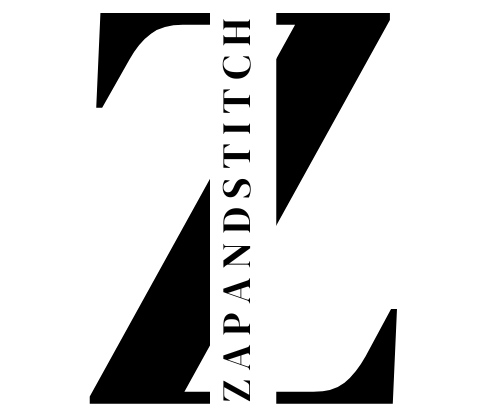Creating crafting books is an engaging way to share your passion for crafts with others. Whether you are a seasoned creator or just starting, the process can be exciting and fulfilling.
By compiling your techniques, patterns, and ideas into a book, you can inspire creativity in others while documenting your own journey. Crafting books can serve various purposes, from hobbyist guides to professional manuals.
In this article, we will explore the essential steps to create your own crafting book. You’ll learn about planning, design, content creation, and publishing options, enabling you to embark on this rewarding project.
Define Your Target Audience
Before you start creating your crafting book, it’s crucial to understand your target audience. Knowing your audience helps you tailor content to their interests and skill levels.
Consider demographics such as age, crafting experience, and the specific crafts they are interested in. This information shapes your writing style, complexity, and design choices.
You can conduct surveys or join craft communities to gain insights into what potential readers would like to read. Engaging with these communities also helps establish a following.
Another essential aspect is identifying the primary goal of your book. Will it introduce new techniques, or will it showcase advanced projects? Clarifying this can simplify your writing process.
Understanding your audience will guide your content creation. For example, if your audience consists of beginners, you might need to include more detailed instructions and explanations.
Outline Your Content
Once you’ve defined your audience, it’s time to outline the content of your crafting book. An organized outline serves as a roadmap, ensuring your book is cohesive and engaging.
Start by brainstorming the topics you want to cover. List various crafts, techniques, and projects you find exciting and relevant to your audience.
After brainstorming, categorize these topics into sections or chapters. This organization will make it easier for readers to navigate your book and find what they’re looking for.
Each chapter should have a clear focus, whether it’s a specific craft, a tutorial, or tips and tricks. This clarity helps maintain the reader’s attention and interest.
Consider including additional resources, such as a glossary or index. These additions can enhance the readers’ experience, making your book a valuable reference tool.
Gather Materials and Tools
Before diving into writing your crafting book, gather all necessary materials and tools for the projects you’ll be including. This preparation helps ensure you have everything readily available when creating your content.
Make a comprehensive list of supplies needed for each project. This list can be included in your book, providing readers with a necessary shopping guide.
Additionally, invest in high-quality materials for better results. For instance, if you’re crafting fabric projects, choose durable and appealing fabrics to showcase in your book.
As you gather supplies, document your process. Take notes and photographs to accompany each project, which will help illustrate instructions and engage readers.
Consider organizing your workspace too. A tidy and efficient workspace will create a more enjoyable crafting experience, allowing you to focus on your creative process.
Write Clear Instructions
Writing clear and concise instructions is essential when creating a crafting book. Your readers must understand your directions to successfully complete your projects.
Use simple language and short sentences to convey your ideas effectively. Avoid jargon unless necessary; if you do use specialized terms, define them upfront.
Break down complex processes into manageable steps. Numbering these steps can make them easier to follow, ensuring that readers do not feel overwhelmed.
Incorporate tips and tricks throughout your instructions. These insights can help readers navigate potential pitfalls and enhance their overall crafting experience.
Finally, encourage creativity by suggesting variations. Prompting readers to modify projects allows them to personalize their creations, fostering a deeper connection to your book.
Design Your Book
The design of your crafting book is vital for attracting readers and enhancing their experience. A visually appealing layout can make your book more enjoyable and engaging.
Choose a color scheme and font that resonate with your target audience. For example, vibrant colors may appeal to younger readers, while a more subdued palette may attract adults.
Incorporate high-quality images of your projects. Visuals are crucial in crafting books, as they can inspire readers and clarify instructions.
Consider using tables, charts, or bullet lists to break down more complex information. This organization can make it easier for readers to digest your content.
Lastly, ensure that your design is consistent throughout the book. A unified look and feel help reinforce your brand and keeps the reader engaged.
Editing and Proofreading
The editing process is a critical step in creating a crafting book. Proper editing ensures that your writing is clear, consistent, and free from errors.
Start by reviewing your content for clarity and coherence. Are your instructions easy to follow? Do your ideas flow logically from one section to the next?
Next, check for grammar and spelling mistakes. Errors can distract readers and diminish your credibility as an author. Consider using grammar-checking tools to assist you in this task.
It can also be beneficial to have a friend or fellow crafter read through your book. Fresh eyes can catch mistakes you might have overlooked and provide valuable feedback.
Finally, once you are satisfied with your editing, prepare your manuscript for publication. Ensure all images are correctly placed and that the layout is as you envisioned.
Publishing Options
After completing your crafting book, deciding how to publish it is the next step. You have several options, including self-publishing and traditional publishing routes.
Self-publishing offers more control over content, pricing, and distribution. Platforms like Amazon Kindle Direct Publishing allow you to reach a broad audience quickly.
Traditional publishing may offer more credibility but often involves lengthy processes and less creative control. Research potential publishing houses that focus on crafting literature.
Whichever route you choose, ensure that you understand the costs and processes involved. Being informed can help you make the best decision for your goals.
Additionally, consider marketing strategies post-release. Building a social media presence can significantly boost your book’s visibility and reach your target audience effectively.
Conclusion
Creating a crafting book is a rewarding endeavor that allows you to share your creativity with others. By following these steps, you can produce a valuable resource for fellow crafters.
From defining your audience to choosing your publishing route, each stage plays a crucial role in your book’s success. Keeping your readers in mind will enhance their experience.
Moreover, don’t hesitate to express your passion and enthusiasm for crafting through your writing. This authenticity will resonate with readers and inspire them to engage in their creativity.
Ultimately, crafting books serve not only as instructional guides but also as a bridge connecting people across different crafting communities.
With determination and creativity, you can bring your crafting book dreams to life. Happy crafting!
| Step | Description |
|---|---|
| Define Audience | Identify who will benefit from your book. |
| Outline Content | Create a structured plan for your book. |
| Gather Materials | Collect all necessary supplies for projects. |
| Write Instructions | Craft clear, step-by-step guides. |
| Design Book | Create an appealing visual layout. |
| Edit and Proofread | Ensure clarity, coherence, and correctness. |
| Publish | Choose between self-publishing and traditional options. |
- Use simple language in instructions.
- Incorporate visuals to enhance understanding.
- Break down complex steps into smaller tasks.
- Encourage creativity with variations on projects.
- Engage with your audience through communities and feedback.



